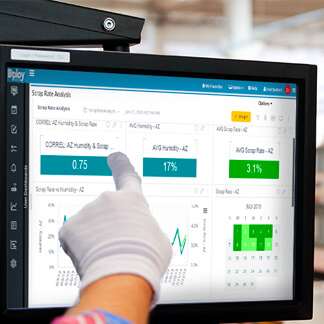Three Dimensions of Successful Continuous Improvement Initiatives
I sometimes still meet with company executives that intend to start continuous improvement initiatives for the first time. More often, I now work with companies that are looking for a refresh. Past initiatives have had varying levels of success, but the continuous improvement has stalled, and results are fading. Either way, how do I explain in a few words what it takes for continuous improvement initiatives to be successful and sustainable?
A recent study by Proqis, “The Global State of Operational Excellence: Critical Challenges and Future Trends”, sought to understand the most critical issues, priorities and successes faced by continuous improvement practitioners in 2017. The study found that 37.5% of respondents claim that their Operational Excellence program is now over 6+years old and they say that sustaining a continuous improvement culture is the most prominent OpEx focus for their organization in the next 12-18 months.
According to the Proqis survey, these are the four most critical challenges facing OpEx programs:
- Improving company culture
- Execution and sustaining OpEx projects
- Maintaining key priorities and focus
- Needing end-to-end business transformation
Respondents from the survey also indicated that these are their top Operational Excellence priorities over the next 12-18 months:
- Sustaining a continuous improvement culture (49%)
- Driving overall business growth (44%)
- Ensuring customer satisfaction (42%)
- Implementing new technologies (41%)
Like so many things in life, sustainable continuous improvement (the number one improvement priority) is in a lot of ways about balance. It is about balancing attention and resources on what I call the three dimensions of a successful continuous improvement implementation.
- The first dimension is Strategy Deployment or “doing the right things”.
- The second dimension is Business Improvement or “doing the things right”.
- And the third dimension is Culture Change or “engaging, accelerating and sustaining”.
Most companies start with the Business Improvement dimension, often in production. Many companies spend years working in this dimension only. This hardly ever leads to sustainable results and mostly these companies eventually abandon the continuous improvement implementation for a lack of sustainable results.
The Strategy Deployment dimension is the forgotten dimension. In the field I see so many companies that work on the business improvement dimension for years without having a clear mind of what needs to be worked on and of what needs to be achieved.
The Culture Change dimension usually gets a good deal of attention. It is generally very well understood that sustainable results can only be achieved if the continuous improvement is embedded in culture change. But unfortunately, many companies struggle with making culture change happen.
It is perfectly okay to start with the Business Improvement dimension and realize some quick wins to demonstrate the power of the Lean and Six Sigma tools and methods. But when an implementation expands, and more resources are involved it becomes imperative that all those resources work in support of a well-defined common goal with clear targets. It is not enough to “do the things right” it is also required to “do the right things”. Clearly “doing the wrong things right” does not lead to anything.
Here is where the Strategy Deployment dimension comes into play. Strategy deployment starts with the business objectives and systematically cascades these down to business units, plants, departments and operational resources to align all improvement efforts to a common goal. A good continuous improvement initiative requires a considerable investment. Strategy deployment links your improvement effort to your business goals to drive a return on your investment.
Although the importance of Culture Change is well understood, most companies have difficulty to actively and systematically work towards changing the corporate culture. When considering a business culture, mostly we ask questions about the outcome or results of the corporate culture such as “does the company support your development”, or “do people give and receive feedback”, although that may give us some insight in the kind of culture we work in, the answers to those questions do not bring us closer to making culture change happen.
Culture is the collective behavior of a group of people, in this case the employees in our business. To change the culture, we must change the behavior of the individuals. Culture is not tangible, still, in the same way as there are tools and methods to drive for instance productivity improvement, there are also plentiful tools and methods to drive culture change. These methods and tools should be an integral part of the Strategy Deployment and Business Improvement efforts.
Do the Business Improvement, Manage with Strategy Deployment, actively drive Culture Change, in perfect balance. And then step it up.





